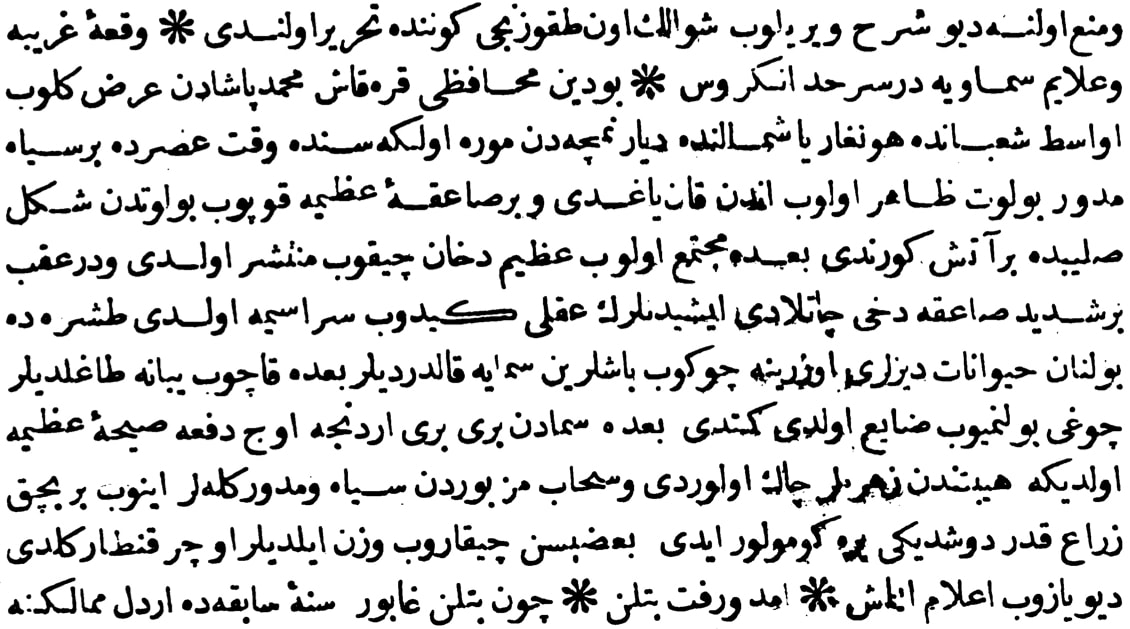|
Faisal Husain Skies raining blood, clouds catching fire, and beasts running amok—a surreal mix of fact and fantasy, the kind of which only a malnourished graduate student could conjure up before drifting off to sleep in a cold, dim library. The Ottoman scholar Katib Çelebi (d. 1657) would beg to differ. The setting for these disturbing images, he reported in his chronicle Fezleke, was Hungary in late June 1619, soon after the breakout of Europe’s Thirty Years’ War. The story is loaded with enigmatic symbolism that I dare not explain, at least not today. Below is a rough translation of the Ottoman text based on the version found in Mustafa Naʿima’s (d. 1716) chronicle, whose prose in this passage is a bit clearer than Çelebi’s. A Strange Event and Celestial Signs in the Hungarian Frontier A report came from the governor of Budapest Karakaş (Black-Eyebrowed) Mehmed Pasha. One afternoon in the middle of [the month of] Shaʿban, he wrote, from the lands of Austria north of Hungary all the way to the Morea, a round black cloud emerged, from which blood rained down and a great thunderbolt erupted. Fire from the cloud in the shape of a cross appeared and later compacted. Great smoke exuded and spread. A violent thunderbolt once again burst. Those hearing were stupefied and lost their senses. Animals in the country knelt down and raised their heads to the sky, soon later running away and scattering in the wilderness. Most of them [swiftly] left and disappeared. The flowers were afterwards ripped to pieces in fear of a great cry from the sky, coming three times one after another. Round and black cannonballs came down from the aforementioned cloud, [crashing and] getting buried one and a half ziraʿ into the ground. [People] excavated and weighed some of them; each one of them was three qintar heavy. Source: Mustafa Naʿima, Tarih-i Naʿima, 2 vols. (Istanbul, 1147 AH/1734 CE), 1:326-327. We can all agree that the story doesn’t make ecological sense. The sky, needless to say, doesn’t rain cannonballs, regardless of how much they weighed. We can also agree that the mental stability of Katib Çelebi, one of the most accomplished Ottoman intellectuals of his time, is beyond question. If our premise is true, what do you make of the story? Faisal Husain is a doctoral candidate at Georgetown University’s Department of History. He recently defended his dissertation, “The Tigris-Euphrates Basin Under Early Modern Ottoman Rule, c. 1534-1830.”
0 Comments
|
EH@G BlogArticles written by students and faculty in environmental history at Georgetown University. Archives
May 2020
Categories |


 RSS Feed
RSS Feed